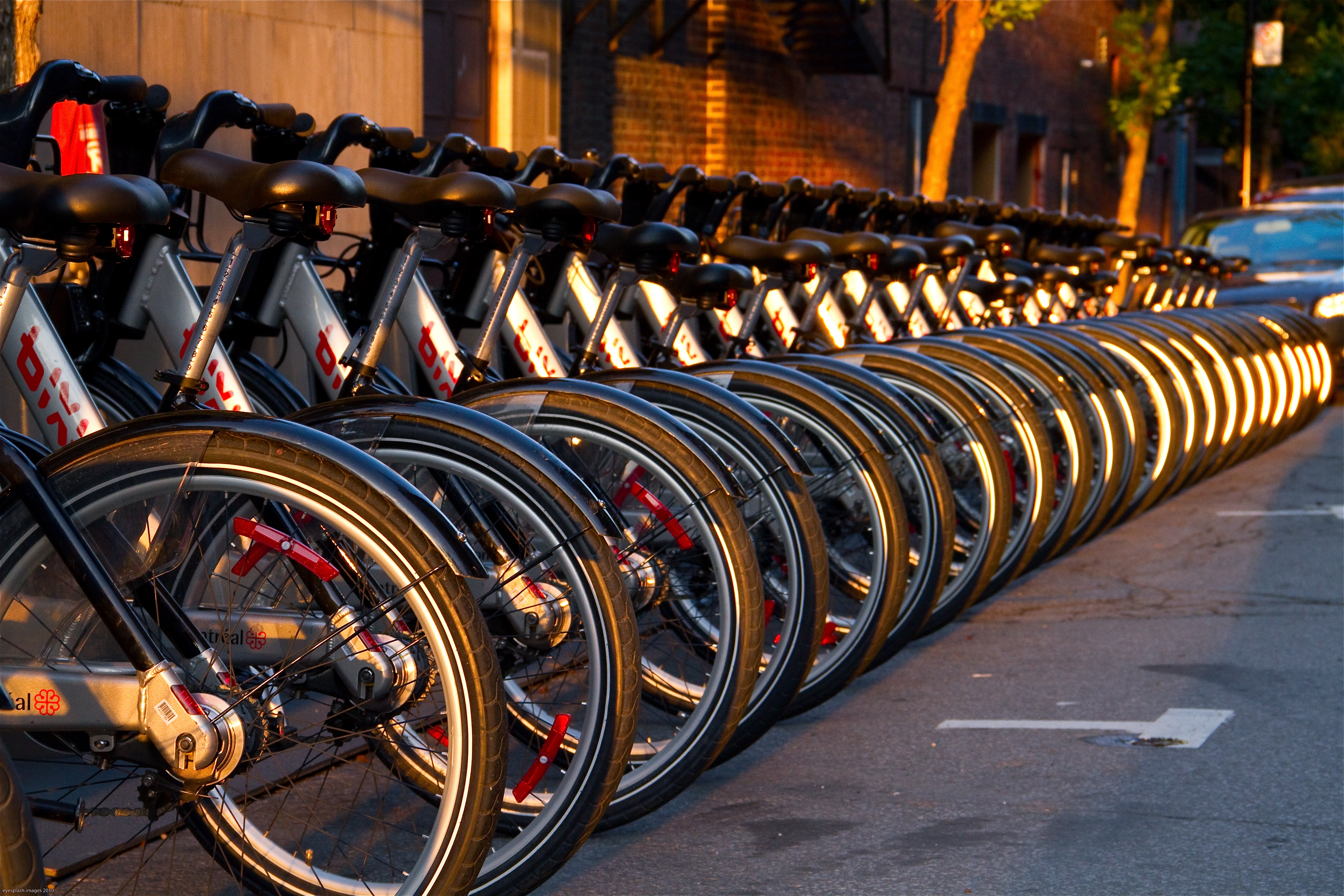
Bixi Hire Bikes, Montreal. Image: http://ow.ly/BZyc301G71c by Mike (Flickr) via Creative Commons
Since the 1980s, Montreal has been forging a name for itself as one of the best cycling cities in the world. Investment in cycling infrastructure has given Montreal a network of bike paths and lanes that today covers almost 750km – more than any other Canadian city. It is also one of the few North American cities to appear frequently on a biennial index which awards rankings according to criteria such as bicycle infrastructure, safety and social acceptance of cycling.
From small beginnings to a cycling city
The roots of Montreal’s cycling success lie in a citizens’ movement that grew to influence mainstream thinking on transportation. Cycling began to attract Montrealers in the 1970s after a sharp rise in the price of petrol. It remained popular in subsequent decades, and by 2015 cycling accounted for 2.5% of all daily trips taken in Montreal. That’s still low compared to Amsterdam (40%) or Munich (30%) but considerably higher than most North American (and many European) cities.
A 2010 report highlighted some of Montreal’s major cycling strengths:
- Diverse types of cycling facilities, including a growing network of on-street separated bike lanes, off-street paths, shared roadway markings and parking points.
- 30km of year-round winter bike paths, with regular snow clearance.
- In 2009, Montreal launched North America’s first public bike-sharing programme – Bixi – which now offers over 5,000 bikes for hire across the city.
In addition, cycling is actively promoted in Montreal and more widely in Quebec by a number of lobbying organisations, such as the Projet Montréal political party and Vélo Québec. Since 1985, Vélo Quebec has organised an annual cycling event. Today, the Tour de l’Île de Montréal attracts tens of thousands of participants and has become the largest event of its kind in the world.
The benefits of bikes
Montreal has come to understand that encouraging more of its citizens to cycle offers multiple economic, social and environmental benefits. Cycling and bike-related tourism generates 1.2 billion Canadian dollars for Montreal and the province of Quebec, and it’s estimated that cycling tourists spend 6% more than the average leisure traveller. Cycling contributes in other ways to the economy: in 2015 Quebecers spent more than 500 million Canadian dollars on cycling-related purchases.
Cities with a cycling culture are increasingly being viewed as more attractive places to live than those where planning decisions begin and end with the car. And cycle-friendly cities have earned a reputation for promoting wellbeing both for people and the environment. In 2011, a British Medical Journal study concluded that public bicycle sharing initiatives (such as Montreal’s Bixi scheme) have greater benefits than risks to health and reduce carbon dioxide emissions.
The challenges of change
In spite of these positives, the development of cycling in Montreal is not without its problems. Aref Salem, who is responsible for municipal transportation in Montreal city council, explained to Toronto’s Star newspaper:
“The challenge is that we have asked people to start using their bicycles and they’ve done it so much faster than we’ve been able to change the city. In the 1950s, ’60s and ’70s we gave all the place to cars and left nothing for anyone else. The challenge now is to give back space to pedestrians and cyclists on the roads. It’s being done, but we don’t have the money to change the city in two years. It takes much longer than that.”
Critics also point out that Montreal’s cycling network is largely confined to the city centre, with many residents in the suburbs still needing a car to get around. And Projet Montréal has highlighted the need to improve the safety of the city’s cyclists, calling for more exclusive bike paths, redesign of dangerous intersections and safer underpasses.
Responding to the challenges
Last year, Montreal dropped down the list of the world’s 20 most cycling-friendly cities. This was not because Montreal is getting worse at supporting cyclists, but because other cities – such as Ljubljana and Strasbourg – are getting better. However, Montreal is not ready to concede its place as a leading location for cyclists. The city’s executive committee has adopted a plan to more than double the length of the bicycle path network, with a goal of 1,280km in the coming decade. Commenting on the plan, Aref Salem, said that, while it may seem ambitious to complete 680 kilometres of paths in 12 years, he was hopeful that the timetable could be achieved, and might even be accelerated.
There is little immediate prospect of Montreal being transformed into a cyclist’s paradise, along the lines of Copenhagen or Amsterdam. But it may offer lessons for big cities wondering how to make the transition from city centres dominated by car traffic to places where cycling is safe, easy and enjoyable.
Share
Related Posts
The Knowledge Exchange Information Service will close on Friday 23 December. Our service will reopen on Tuesday 3 January 2023. The first bulletin of 2023 will be published on 11 January, and the first Topic Updates of the New Year ....
It is well recognised that the UK faces a shortage in STEM (science, technology, engineering and maths) skills, and that at current projections, this gap in skills and knowledge is only going to grow in the coming years. Before the ....

